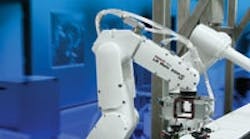At a time when manufacturers are facing thinner and thinner margins, there's less room to invest in new capital equipment. This doesn't necessarily have to hinder companies, says Eddie Silverberg, CEO of Flexible Assembly Systems, a supplier of torque tools and equipment.
By taking a more active role in maintaining and maximizing capital equipment, companies can extend the lifetime of the hardware by years.
Here are five ways Silverberg says manufacturers can succeed in this, even on modest budgets:
A high-end torque screwdriver or electric screwdriver can have a lifespan of less than six months if not used properly, he says. Doing background research, such as learning the best way to use the equipment, can make a dramatic difference.
Equipment failure costs dollars in lost productivity and customer dissatisfaction, especially when part of an automated assembly system. Schedule to check and calibrate equipment and tools at regular intervals, and not when problems arise. Invest in an in-house calibration tool like a torque tester. Over time, it will save money, says Silverberg, and it often improves product quality as well.
There are many firms that specialize in maintaining and calibrating equipment. Build relationships with the ones you can trust, and it will pay off. "The best capital equipment companies stay for the life of the tool," says Silverberg.
Even high-end capital equipment, such as Fanuc's LR Mate 200i, can have shorter lifespans if not used properly. Doing background research can make a dramatic difference.
Equipment and tools eventually need to be replaced, and dollars eventually need to be spent. Seek out firms with a long-term maintenance policy, as opposed to a focus on new product purchase.
See Also




